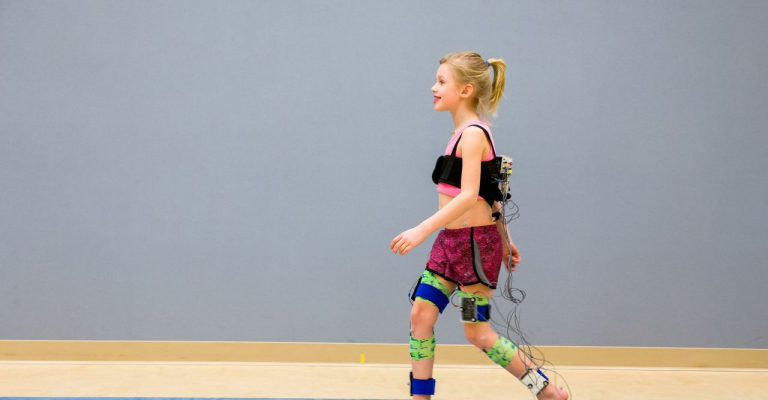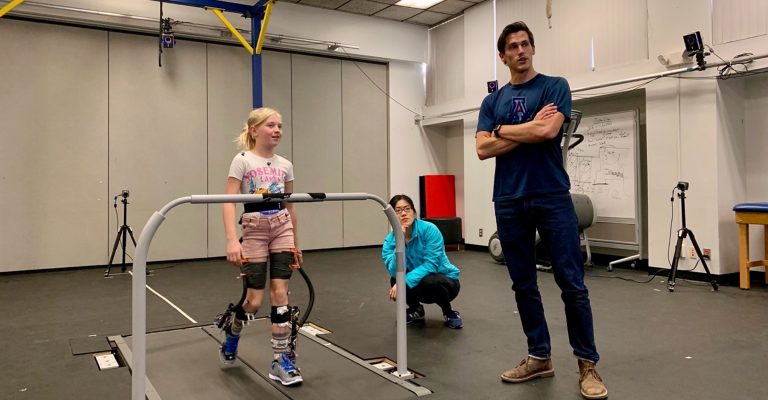
The most common symptom of cerebral palsy is difficulty moving about, especially while walking. Problems with mobility might range from a slightly off-kilter gait to a complete inability to walk at all. Mobility and quality of life can both be improved by the use of medications, surgical procedures, adapted equipment, and physical therapy.
The term “cerebral palsy” refers to a set of neurological diseases that are brought on by faulty development or damage to the brain during pregnancy, infancy, or early childhood.
Cerebral palsy can affect one or both sides of the body. It leads to spastic or flaccid muscles, impaired reflexes, poor coordination, involuntary motions, poor posture, and reduced balance. It causes altered muscular tone and movement.
Everyone who has cerebral palsy is unique, and the severity and kind of disability vary greatly from person to person.
The majority of people who have cerebral palsy walking experience some degree of difficulties when it comes to mobility, which might include having trouble moving around or transitioning from one posture or place to another.
The most prevalent form of cerebral palsy is called spastic, and it’s characterized by muscles that are highly toned and movements that are spastic and jerky.
It is difficult to maintain control of one’s motions when one’s muscles are taut, rigid, and highly toned.
This form of cerebral palsy makes it difficult to walk and can cause a jerky, unsteady gait if it affects the muscles in the lower body.
A person who suffers from dyskinetic cerebral palsy walking can be a challenge as they experience difficulty controlling involuntary movements in the muscles.
The patient’s muscle tone is inconsistent, ranging from extremely undertoned to extremely overtoned, making it difficult to move and maintain control of the limbs.
Movements affected by ataxic cerebral palsy are unsteady, and patients have trouble maintaining their balance. It’s possible that a person with this form of cerebral palsy will need to walk with their feet spread apart in order to keep their balance.
The degree to which mobility is impaired also relies on the specific muscle groups that are most severely impacted and how severely they are impaired.
Because the sensations are concentrated primarily in the legs, mobility becomes increasingly difficult.

The severity of a person’s cerebral palsy can be rated on a scale that helps to describe the restrictions and capabilities that they have in terms of their movement. The Gross Motor Function Classification System, sometimes known as the GMFCS, is a classification scheme that outlines five distinct degrees of mobility.
If your child has cerebral palsy, there is a good likelihood that they will have some degree of trouble moving about. It is vital to conduct an assessment of their existing mobility before attempting to assist them in overcoming such restrictions. The results of this evaluation provide medical professionals with information regarding the individuals’ capabilities and limitations, as well as the types of treatment, therapy, or adapted devices that will improve mobility.
The conventional method for determining how a youngster walks and the constraints that come with it is called a gait evaluation or analysis. It is a comprehensive form of assessment that helps medical professionals understand how a patient walks and the reasons behind that walking pattern. By gaining an understanding of the factors that contribute to an awkward gait, medical experts are better able to devise treatments and improvements.
During the evaluation, factors such as strength, muscle tone, reflexes, range of motion, balance, and others are taken into consideration.
Surgery is a potential treatment option for improving a patient’s mobility who has cerebral palsy, despite the fact that it is not very prevalent. It is important to consider the severity of the problem, the factors that are contributing to it, whether or not it can be easily addressed with a surgical operation, and the age of the child.
Cerebral palsy is a condition that can never be cured; however, surgery to correct a malformation in the legs, for example, may enable a kid to walk with less difficulty and achieve a better level of independence. Surgery to extend constricted muscles and tendons can aid increase mobility while also lowering stiffness and pain, and this is one of the benefits of the procedure.
Physical therapy is a tried-and-true method for addressing mobility-related concerns, and patients with cerebral palsy are eligible to receive its benefits. A physical therapist can assist patients in establishing mobility objectives, such as being able to walk with the aid of an assistive device, walking with less discomfort, or having improved balance, and then working with patients on a consistent basis to achieve those mobility goals.
The benefits of physical therapy for mobility include increasing flexibility and range of motion, as well as strengthening muscles, improving coordination, and enhancing balance. In order to accomplish these objectives and provide children with increased independence, physical function, and ultimately more mobility, physical therapy uses a variety of activities and exercises, as well as specialized equipment and stretching techniques.

Specific medications, by addressing the underlying problems with muscles, may also help alleviate certain symptoms that are associated with cerebral palsy. These symptoms include the following: Muscle relaxants are frequently utilized in the treatment of cerebral palsy because of their ability to reduce muscle stiffness.
Diazepam, baclofen, and other drugs that work in a similar manner can relax rigid muscles, so enabling a person to move with greater fluidity and ease. There is a risk that you will suffer from unwanted effects, some of which include feeling exhausted, weak, suffering diarrhea, and experiencing nausea.
In addition to physical therapy and various other measures for enhancing mobility, walking aids might be of assistance to those who could benefit from them.
Canes and walkers are helpful for youngsters who have uneven gait or who struggle to maintain their balance. Those who are unable to walk at all or who can only do so with extreme discomfort or difficulty may find that using a wheelchair considerably improves their capacity to move around and be mobile.
The inability to move freely is one of the most frequently encountered difficulties connected with cerebral palsy.
A kid with this disease must have an evaluation to determine the kind and severity of mobility concerns, and the child’s parents need to be provided with alternatives for ways to improve their child’s mobility.
Even though the condition cannot be healed, helping children achieve the highest possible level of function and independence by taking steps to make moving more accessible can help children realize their full potential.